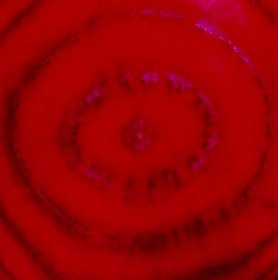Color Your World
 So you're facing your living room wall and thinking about color. It's not unusual for some of us to spend days or weeks searching for just the right shade of that eggplant that we saw at the farmer's market that everyone commented on as the most beautiful color on earth. But what would you say if I told you that amazing eggplant color doesn't really exist. In fact, no color exists.
What we think of as color is actually no more than a reflection of light that reaches our eyes through waves. Our brains then interpret the waves as colors. Color, therefore, is really more about how we choose to use it in our environment. How many people automatically associate green with a hospital, white with a classroom, red with a bordello (come on, admit it!)?
So you're facing your living room wall and thinking about color. It's not unusual for some of us to spend days or weeks searching for just the right shade of that eggplant that we saw at the farmer's market that everyone commented on as the most beautiful color on earth. But what would you say if I told you that amazing eggplant color doesn't really exist. In fact, no color exists.
What we think of as color is actually no more than a reflection of light that reaches our eyes through waves. Our brains then interpret the waves as colors. Color, therefore, is really more about how we choose to use it in our environment. How many people automatically associate green with a hospital, white with a classroom, red with a bordello (come on, admit it!)?
Color association is what forms the basis of chromatherapy, a branch of holistic healing that uses color to achieve optimal health. Research has shown that certain colors have measurable psychological and physiological effects on people. For example, warm colors such as red and orange usually act as stimulants and have been shown to elevate heart rates, induce perspiration and arouse feelings of excitement. Think of how much red you see around Valentine's Day. And what bride would think of wearing red down the aisle? What does white evoke in us? Purity, cleanliness.
Studies also have shown that people attach symbolic significance to certain colors. For instance most cultures associate black with sadness, green with healing, purple with power and red with love. So by considering the significance of colors and how they make you feel, you can create a mood just by painting the walls. Cool colors, such as green, blue and indigo are thought to be calming, while red, orange and other warm colors are said to have energizing effects.
We also have emotional responses to certain colors stemming from our experiences and our experience in the natural world. The ocean, the forest, the desert, the sky, all induce a certain emotion in us which we can transfer into our homes. Airlines have even used color in seat choices and in welcome screens at passenger seats to calm and soothe fliers. Even swimming pools use chromatherapy lighting as part of the design of an outdoor space.
At ISIS, our lymphatic drainage treatments use chromatherapy light through the glass wands to enhance the effects of the drainage. Yellow for tissue congestion and detoxification, red to increase circulation, purple to hydrate and blue to mineralize tissues. Even our wall color mystifies clients by appearing to vary from brown to chocolate to raspberry depending on the light.
So don't underestimate the effect of color, in your clothing, your home and even your hair. You may be having more of an effect than you realize!
